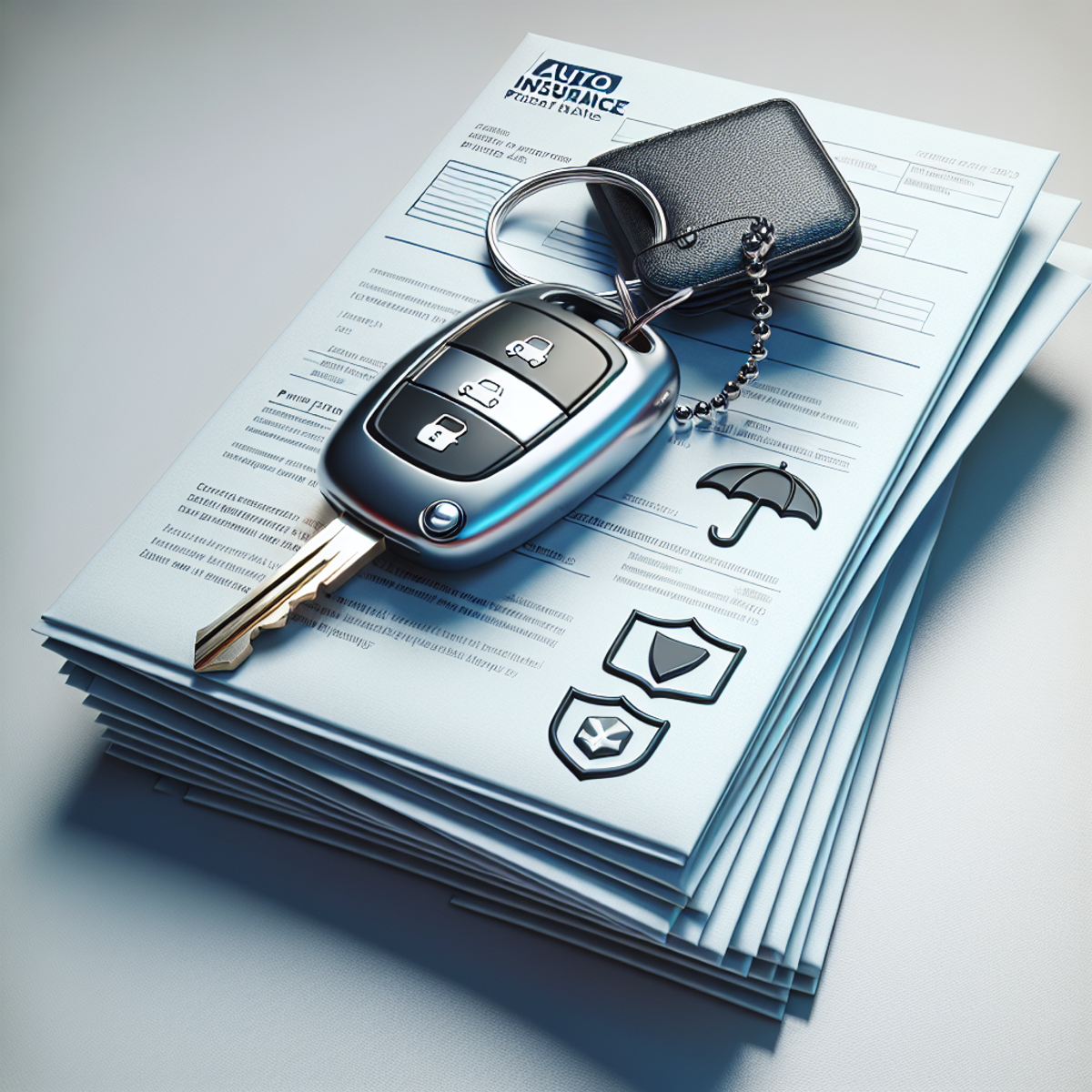Welcome to our comprehensive Auto Insurance Ultimate Guide on understanding auto insurance. This piece offers a wealth of knowledge about car insurance. We delve into the basics, coverage options, minimum requirements, and we also shed light on some crucial terms and concepts.
In the next segment, we focus on individuals who are either looking to shop for new policies or renew their existing ones. Our guide is designed to equip you with essential information that aids in making informed decisions. So, without further ado, let’s dive deeper into exploring all there is about car insurance. For additional insights, you can always visit us at MakeThatBenjie.com.
Basics
Introduction to Auto Insurance
Auto insurance, often referred to as car insurance, serves as a vital safety net for drivers. This contract between an individual and an insurance company sees you, the policyholder, paying a certain amount (known as a premium), in exchange for financial protection against any harm that may come to your insured vehicle – be it through accidents, theft, or damage.
The Importance of Car Insurance
Having this type of insurance is not just a requirement by law in many places, but it also gifts you peace of mind when faced with unforeseen circumstances. At its core, auto insurance comprises a policy that spells out your coverage’s specifics, how much you need to pay for this protection (the premium), and what part of any claim you’ll need to cover yourself (the deductible).
Types of Car Insurance Coverage
Car insurance provides various types of coverage like liability coverage, collision coverage, comprehensive coverage, medical payments coverage, etc., based on the policy’s terms and the company providing the insurance. Knowing about these different coverage types is crucial; it helps you make a well-informed choice when picking out an auto insurance policy.

Coverage
Understanding Auto Insurance Coverage
One of the most critical aspects of auto insurance is the coverage it provides. The primary purpose of auto insurance coverage is to offer protection against financial losses resulting from an accident. The three main types of protection offered by an auto insurance policy are:
- Liability coverage: This covers the costs of the other party’s injuries and damages if you are at fault in an accident.
- Coverage for damage to other vehicles: This includes damage to the other party’s vehicle as well as any property damage.
- Personal injury protection: This covers medical expenses for the policyholder and their passengers.
There are different levels of coverage available, and it’s important to carefully consider the types of coverage that best suit your individual needs.
Evaluating Different Levels of Coverage
- For example, liability coverage is a fundamental component of auto insurance and is required in most places. It helps cover the costs of the other party’s medical bills and property damage if you’re at fault in an accident.
- On the other hand, collision coverage is designed to help pay for repairs to your vehicle if you’re involved in a collision, while comprehensive coverage offers protection for your vehicle in non-collision incidents, such as theft, vandalism, or natural disasters.
Understanding these different types of coverage is essential in making an informed decision when purchasing auto insurance.
Minimum Requirements
Auto Insurance Ultimate Guide: Minimum Requirements
Each state has its own set of minimum requirements for auto insurance coverage. While the specific requirements vary by state, most states require drivers to have a minimum amount of liability coverage. This type of coverage is designed to provide financial protection if you are at fault in an accident and can help cover the other party’s medical expenses and property damage.
It’s essential to be aware of the minimum auto insurance requirements in your state to ensure that you have the necessary coverage to comply with the law and protect yourself financially.
Additional Coverage Requirements
In addition to liability coverage, some states may also have minimum requirements for personal injury protection (PIP) or uninsured/underinsured motorist coverage:
- Personal Injury Protection (PIP): This coverage can help pay for medical expenses related to injuries sustained in a car accident, regardless of who is at fault.
- Uninsured/Underinsured Motorist Coverage: This coverage offers financial protection if you’re involved in an accident with a driver who doesn’t have insurance or doesn’t have enough coverage to fully compensate you for damages.
Understanding and meeting these additional minimum requirements is crucial for all drivers to ensure they are compliant with the law and adequately protected in the event of an accident.
Premium Factors
Several factors can affect the premium cost of an auto insurance policy. Insurance companies consider various elements when determining the cost of a policy, including:
Driver Factors
- Age and driving experience
- Driving record (history of traffic violations or accidents)
Generally, younger and less experienced drivers may face higher insurance premiums due to a higher perceived risk of being involved in an accident. Additionally, individuals with a history of traffic violations or accidents may also see an increase in their insurance premiums.
Vehicle Factors
- Make and model of the vehicle
- Primary use of the vehicle
- Annual mileage
Coverage Factors
- Coverage limits
- Deductibles chosen
Location Factors
The state and location where the vehicle is primarily driven and parked also play a significant role in determining the premium cost, as each state has its own insurance regulations and risk factors that can impact the cost of insurance.
When purchasing auto insurance, it’s important to consider these factors and how they may affect the overall cost of the policy.
Choosing the Right Damages
When buying car insurance, it’s crucial to think about the specific damages you want your policy to cover. Here are a few factors to consider:
1. Evaluate Your Needs
Take a moment to think about your driving habits, lifestyle, and location. Ask yourself:
- Do I live in an area with extreme weather conditions or a high crime rate?
- How often do I drive and how far is my commute?
- Is my vehicle particularly valuable or brand new?
By answering these questions, you can identify the potential risks and vulnerabilities you face as a driver.
2. Understand the Types of Coverage
Before making a decision, familiarize yourself with the various types of coverage available:
Comprehensive Coverage
This type of coverage protects against non-collision incidents such as natural disasters, vandalism, and theft.
Collision Coverage
This coverage is specifically designed to pay for repairs or replacement costs in case of an accident.
3. Make an Informed Choice
Based on your assessment of needs and understanding of coverage options, you can now make a wise decision about the damages you want your policy to include. Remember, it’s not always best to go for the minimum coverage required by law. Instead, think about the potential financial impact of being underinsured for specific damages that are more likely to occur in your situation.
For example, if you live in an area prone to flooding or have a long daily commute through heavy traffic, comprehensive coverage might be worth considering.
Similarly, if you have a luxury car or just purchased a brand new vehicle, collision coverage could provide valuable peace of mind.
By tailoring your auto insurance policy to your unique circumstances, you can ensure that you’re adequately protected against the damages that matter most to you. This is the essence of the Auto Insurance Ultimate Guide.

Common Discounts
Auto insurance companies often offer various discounts that policyholders can take advantage of to save on their insurance premiums. Here are some common discounts that you may be eligible for:
- Multi-Policy Discount: This discount is available when you bundle your auto insurance with another type of insurance, such as homeowner’s insurance.
- Good Driver Discount: If you have a clean driving record with no accidents or traffic violations, you may qualify for this discount.
- Safety Feature Discount: Having anti-theft devices or safety features installed in your car can earn you a discount on your premium.
- Low Mileage Discount: If you drive fewer miles than the average driver, you may be eligible for this discount.
Additionally, some insurance companies offer discounts for:
- Completing a defensive driving course
- Being a student with good grades
- Insuring multiple vehicles
It’s essential to inquire about these discounts when purchasing auto insurance and see if you qualify for any of them. By taking advantage of these cost-saving opportunities, you can lower your overall auto insurance expenses while still getting the coverage you need. This is an important aspect to consider as part of the Auto Insurance Ultimate Guide.
Making Claims and Insurance Adjusters
In the event of an accident or covered incident, understanding the process of making an insurance claim and working with insurance adjusters is crucial. When filing a claim, it’s important to provide accurate and detailed information about the incident and to cooperate fully with the insurance company’s claims department.
Working with Insurance Adjusters
An insurance adjuster, who is responsible for investigating and evaluating the claim, will be assigned to assess the damages and determine the coverage and benefits applicable to the policy. It’s essential to communicate openly and transparently with the insurance adjuster, providing any necessary documentation and information to support the claim.
Understanding the Claims Process
Understanding the claims process and what to expect when working with an insurance adjuster can help facilitate a smoother and more efficient resolution to a claim. This can include obtaining estimates for repair costs, providing documentation for any medical treatment received, and following the procedures outlined by the insurance company for the claims process. These steps are vital elements in the Auto Insurance Ultimate Guide.

Importance of Continuous Coverage
Continuous auto insurance coverage is essential for several reasons.
- Financial Protection: Maintaining continuous coverage helps protect you financially in the event of an accident or unexpected event.
The Benefits of Continuous Coverage
- Long-Term Benefits: Continuous coverage can have long-term benefits for your insurance premiums.
- Insurance companies often consider the length of time you’ve been continuously insured when determining your premium rates.
- Having a history of continuous coverage can work in your favor by potentially lowering your insurance costs.
Having continuous auto insurance coverage is crucial for numerous reasons. One of the primary reasons is financial protection. By having continuous coverage, you are safeguarding yourself against any unexpected mishaps or accidents.
Moreover, continuous coverage offers long-term benefits for your insurance premiums. It’s worth noting that insurance companies often take into account the duration you’ve been insured without interruption. This continuity can turn out to be beneficial by potentially decreasing your insurance costs.
Ensuring Shielded Travel
In the second part, it’s essential to understand that continuous coverage ensures that you’re always shielded on the road. This protection doesn’t leave any gaps that could expose you to potential financial losses in case of an accident.
Lastly, some insurance providers might extend loyalty or renewal discounts to those who uphold continuous coverage with them. Therefore, maintaining ongoing auto insurance coverage not only safeguards you but also opens up opportunities for cost-saving offered by insurers.
Money Saving Tips
Comparing Quotes
Several strategies can help individuals save money on their auto insurance premiums. One effective way to save on insurance costs is to compare quotes from multiple insurance companies to find the most competitive rates and coverage options.
Maintaining Good Records
Additionally, maintaining a good driving record and being mindful of the type of vehicle being insured, the coverage limits, and the deductibles selected can also impact the overall cost of insurance.
Utilizing Discounts
Furthermore, taking advantage of available discounts and bundling insurance policies, such as auto and homeowner’s insurance, with the same company can result in significant cost savings.
Adjusting Coverage
Auto Insurance Ultimate Guide It’s also important to review and adjust your coverage as needed, as life changes, such as moving to a new location or changing vehicles, can create opportunities to optimize your coverage and potentially lower your premiums. By staying informed about available discounts, comparing quotes, and regularly reviewing your coverage, you can proactively manage your auto insurance costs while still maintaining the necessary protection.

Understanding the Basics of Auto Insurance Policies
Auto insurance policies are comprehensive legal contracts that outline the terms, conditions, and coverage details provided by the insurance company. When purchasing or renewing an auto insurance policy, it’s important to carefully review and understand the policy to ensure that it meets your individual needs and provides the necessary protection.
Key Components of an Auto Insurance Policy
Key components of an auto insurance policy include the declaration page, which outlines the policyholder’s information, coverage limits, and the premium amount; the insuring agreement, which details the scope of coverage provided; and the conditions and exclusions that apply to the policy.
Importance of Understanding Your Policy
It’s important for policyholders to have a clear understanding of the types of coverage included in their policy, the limitations and exclusions that may apply, and the steps to take in the event of an accident or claim. By familiarizing themselves with the basics of auto insurance policies, individuals can make informed decisions when selecting coverage and understand their rights and responsibilities as policyholders.
Creating a Transparent Relationship with Your Insurer
This can help create a more transparent and communicative relationship with the insurance company and ensure that the policy effectively meets the policyholder’s needs.
Types of Coverage Provided by Auto Insurance
Auto insurance offers a range of coverage options to protect policyholders against various risks and potential financial losses. Some of the primary types of coverage provided by auto insurance include liability coverage, which is designed to cover the costs of the other party’s injuries and property damage if you are at fault in an accident; collision coverage, which helps pay for repairs to your own vehicle in the event of a collision;
Collision Coverage
and comprehensive coverage, which offers protection for non-collision events, such as theft, vandalism, or natural disasters.
Comprehensive Coverage
In addition to these core coverages, auto insurance may also include medical payments coverage, uninsured/underinsured motorist coverage, and personal injury protection, depending on the policy and the state in which it is issued. These additional coverages can offer valuable protection for medical expenses, injuries, and damages resulting from accidents.
Additional Coverages
Understanding the types of coverage provided by auto insurance is essential in making informed decisions when selecting a policy and ensuring that you have the necessary protection for your individual circumstances.

Minimum Auto Insurance Requirements by State
Each state has its own minimum requirements for auto insurance coverage that drivers must comply with to legally operate a vehicle.
Liability Coverage
The most common requirement is liability coverage, which is intended to cover the costs of the other party’s medical expenses and property damage if you are at fault in an accident.
Personal Injury Protection and Uninsured/Underinsured Motorist Coverage
In addition to liability coverage, some states may also have minimum requirements for personal injury protection (PIP) and uninsured/underinsured motorist coverage to ensure that drivers have adequate protection in the event of an accident with an uninsured or underinsured motorist.
Importance of Knowing Your State’s Requirements
It’s important for drivers to be aware of the minimum auto insurance requirements in their state and to ensure that their insurance policy meets or exceeds these requirements.
Legal Penalties and Financial Liability
Failing to maintain the necessary minimum coverage can result in legal penalties and financial liability in the event of an accident. By understanding and meeting the minimum auto insurance requirements in their state, drivers can ensure that they are compliant with the law and adequately protected on the road.
Conclusion
In conclusion, understanding the basics of auto insurance and the different types of coverage is highly important. Truly, every car owner should bear this in mind. This guide has covered all you need to grasp. It ranges from the minimum requirements to the nifty cost-saving tips.
On another note, with the appropriate coverage and a solid understanding of claims and insurance adjusters, you can ensure your protection. Not just you, but also your vehicle while on the road.
Moreover, let’s not forget about maintaining your coverage continuously. It’s vital not only for legal reasons but also for your own peace of mind. Additionally, remember there are common discounts available. You can utilize these to save some money. This is all part of the ‘Auto Insurance Ultimate Guide’.
Speaking of savings, have you heard of Allianz car insurance? They offer an enticing discount that could go up to 40%! It’s an offer that guarantees ultimate protection and peace of mind while driving.
Lastly, for more comprehensive information about auto insurance, there’s always a reliable source online. Visit https://www.consumerfinance.gov/ for more insights and updates.
